4.8 out of 5 Stars on TrustPilot
Applying Render to Cement Board
What are cement boards?
Cement boards, also known as “render carrier boards” or “weather carrying boards”, are sheets comprised of cement and reinforcing fibres used as tile backing boards as a base for render and external wall insulation. Combined with magnesium, an oxide coating and fibreglass mesh, cement boards create a solid surface that can withstand extreme weathering, including rain, wind and snow. What’s more, cement boards do not rot or swell when they encounter water, meaning they can stand the test of time even on the exterior of a property. The most common cement boards on the market for render are Aquapanels, STS render carrier board and Siniat boards.
-
STS Render Carrier Board – 12mm (2.4m x 1.2m)
£56.27 Incl. VAT£46.89 Excl. VAT -
Knauf AQUAPANEL® Cement Board Outdoor – 12.5mm (2.4m x 0.9m)
£71.99 Incl. VAT£59.99 Excl. VAT -
STS CEMBER – Render Board Screws (38mm)
£11.99 Incl. VAT£9.99 Excl. VAT
Applying render to cement boards
Cement boards can be finished in numerous ways however, one of the most effective ways is to apply render. Not only does render enhance the external appearance of a property, but it improves its thermal performance and thereby reduces energy costs. With that, let us explain how to apply render to cement boards!
Step one: Priming the cement boards
The first step to applying render to cement boards is to prime the boards. We recommend using our EWI-310 Universal Primer as the presence of silicate in the render creates an excellent adhesive for the basecoat of the render (to learn more about how primers work, make sure to check our complete guide to EWI Primers). The Universal Primer comes in 20kg buckets, and each bucket can cover between 60 and 80m2 depending on the absorption from the cement board. The primer should be applied to the cement board using a brush or roller; its red colour allows you to see clearly where on the wall it has been applied. For best results, allow the primer to dry completely before applying the next layer.
-
Universal Primer (EWI-310) – 20kg
Rated 4.40 out of 5£72.04 Incl. VAT£60.03 Excl. VAT
Step two: Applying the basecoat
After the primer, applying the basecoat to the cement board is relatively easy. Firstly, an adhesive must be applied; our adhesives come dry, meaning they must be mixed with water before application. We recommend using our EWI-225 Premium Adhesive as this is our strongest basecoat and will help prevent cracking. Upon being mixed with water to form a cream coloured putty, the adhesive should be applied with a notched trowel. For best results, use a 10mm-sized notched trowel for applying a 6mm-thick layer of adhesive to the cement board.
Once the adhesive has been applied, the fibreglass mesh can be embedded within the adhesive; it is this mesh that makes our render systems so flexible. The fibreglass mesh comes in rolls which must be applied vertically, overlapping one another by 10cm, within the adhesive; this can be achieved by drawing the flat edge of the notched trowel up from the bottom of a wall to pull the adhesive through the holes of the mesh. Our EWI-66645 Orange Fibreglass Mesh rolls are 50cm in length, 1m in width and cover 50m2.
As the render topcoat is so thin, it is vital to ensure that the basecoat is completely smooth. If the basecoat is still not completely smooth even after the mesh has been embedded, the easiest solution is to produce a very wet adhesive mix to apply to the basecoat.
-
Premium Basecoat (EWI-225) – 25kg
Rated 5.00 out of 5£23.23 Incl. VAT£19.36 Excl. VAT -
Orange Fibreglass Mesh – 50m²
Rated 5.00 out of 5£59.88 Incl. VAT£49.90 Excl. VAT
Step three: Priming the basecoat
Once the fibreglass mesh-embedded adhesive is completely smooth, the wall needs to be primed ready for the render. The primer used depends on the type of render however, provided you match the primer with the render, the principle is the same. For example, our EWI-333 Silicone Silicate Primer comes in either 7kg or 2kg buckets and can be applied using a paintbrush or roller, with the 7kg bucket covering approximately 20m2 of the wall and the 2kg bucket 70m2.
-
Top Coat Primer (EWI-333)- 20kg
Rated 5.00 out of 5From £78.97 Incl. VATFrom £65.81 Excl. VAT -
Topcoat Primer (EWI-333) – 7kg
From £28.79 Incl. VATFrom £23.99 Excl. VAT
Step four: Applying the render
As soon as the basecoat primer is dry, it is time to apply the render!
The majority of EWI Pro renders are thin-coat renders, so the thickness of the topcoat is determined by the grain size of the render. For instance, our EWI-040 Silicone Silicate Render comes in four different grain sizes – 1mm, 1.5mm, 2mm and 3mm – so, if you are to purchase a 2mm-thick Silicone Silicate Render, the topcoat should be applied no thicker than 2mm thick. We have received various reports of the render being applied too thick and thereby impinging on the desired finish, so it’s vital to remember that the thickness of the render itself and render facade must match!
With that in mind, make sure to apply the render to the cement board with a trowel as you can pull off any excess with the trowel, too. Once any excess has been removed, leave the render for five minutes, then work the render in a circular motion using a plastic float to achieve the desired finish.
-
Silicone Render (EWI-075) – 25KG
Rated 4.83 out of 5From £84.78 Incl. VATFrom £70.65 Excl. VAT -
Nano Drex Silicone Render (EWI-077) 25kg
Rated 4.83 out of 5From £154.19 Incl. VATFrom £128.49 Excl. VAT -
Premium Bio Silicone Render (EWI-076) – 25kg
Rated 4.00 out of 5From £97.04 Incl. VATFrom £80.87 Excl. VAT -
Silicone Silicate Render (EWI-040) – 25kg
Rated 5.00 out of 5From £73.70 Incl. VATFrom £61.42 Excl. VAT
And that’s how render is applied to cement boards! If thin-coat render systems are of interest to you, make sure to check out our blog on coloured render costs per square metre for an accurate idea as to how much the materials for such a system typically cost. If you have any questions, do not hesitate to comment below or contact us!
Facebook
Twitter
LinkedIn
Your cart
Trade Account Login

We use cookies on our website to give you the most relevant experience by remembering your preferences and repeat visits. By clicking “Accept All”, you consent to the use of ALL the cookies. However, you may visit "Cookie Settings" to provide personalised consent.
Manage consent
Privacy Overview
This website uses cookies to improve your experience while you navigate through the website. Out of these, the cookies that are categorized as necessary are stored on your browser as they are essential for the working of basic functionalities of the website. We also use third-party cookies that help us analyze and understand how you use this website. These cookies will be stored in your browser only with your consent. You also have the option to opt-out of these cookies. But opting out of some of these cookies may affect your browsing experience.
Necessary cookies are absolutely essential for the website to function properly. These cookies ensure basic functionalities and security features of the website, anonymously.
| Cookie | Duration | Description |
|---|---|---|
| __stripe_mid | 1 year | This cookie is set by Stripe payment gateway. This cookie is used to enable payment on the website without storing any patment information on a server. |
| __stripe_sid | 30 minutes | This cookie is set by Stripe payment gateway. This cookie is used to enable payment on the website without storing any patment information on a server. |
| _GRECAPTCHA | 5 months 27 days | This cookie is set by the Google recaptcha service to identify bots to protect the website against malicious spam attacks. |
| apbct_cookies_test | session | CleanTalk sets this cookie to prevent spam on comments and forms and act as a complete anti-spam solution and firewall for the site. |
| apbct_page_hits | session | CleanTalk sets this cookie to prevent spam on comments and forms and act as a complete anti-spam solution and firewall for the site. |
| apbct_prev_referer | session | Functional cookie placed by CleanTalk Spam Protect to store referring IDs and prevent unauthorized spam from being sent from the website. |
| apbct_site_landing_ts | session | CleanTalk sets this cookie to prevent spam on comments and forms and act as a complete anti-spam solution and firewall for the site. |
| apbct_site_referer | 3 days | This cookie is placed by CleanTalk Spam Protect to prevent spam and to store the referrer page address which led the user to the website. |
| apbct_timestamp | session | CleanTalk sets this cookie to prevent spam on comments and forms and act as a complete anti-spam solution and firewall for the site. |
| apbct_urls | 3 days | This cookie is placed by CleanTalk Spam Protect to prevent spam and to store the addresses (urls) visited on the website. |
| AWSALBCORS | 7 days | This cookie is managed by Amazon Web Services and is used for load balancing. |
| cookielawinfo-checkbox-advertisement | 1 year | Set by the GDPR Cookie Consent plugin, this cookie is used to record the user consent for the cookies in the "Advertisement" category . |
| cookielawinfo-checkbox-analytics | 11 months | This cookie is set by GDPR Cookie Consent plugin. The cookie is used to store the user consent for the cookies in the category "Analytics". |
| cookielawinfo-checkbox-functional | 11 months | The cookie is set by GDPR cookie consent to record the user consent for the cookies in the category "Functional". |
| cookielawinfo-checkbox-necessary | 11 months | This cookie is set by GDPR Cookie Consent plugin. The cookies is used to store the user consent for the cookies in the category "Necessary". |
| cookielawinfo-checkbox-others | 11 months | This cookie is set by GDPR Cookie Consent plugin. The cookie is used to store the user consent for the cookies in the category "Other. |
| cookielawinfo-checkbox-performance | 11 months | This cookie is set by GDPR Cookie Consent plugin. The cookie is used to store the user consent for the cookies in the category "Performance". |
| ct_checkjs | session | CleanTalk–Used to prevent spam on our comments and forms and acts as a complete anti-spam solution and firewall for this site. |
| ct_fkp_timestamp | session | CleanTalk sets this cookie to prevent spam on the site's comments/forms, and to act as a complete anti-spam solution and firewall for the site. |
| ct_pointer_data | session | CleanTalk sets this cookie to prevent spam on the site's comments/forms, and to act as a complete anti-spam solution and firewall for the site. |
| ct_ps_timestamp | session | CleanTalk sets this cookie to prevent spam on the site's comments/forms, and to act as a complete anti-spam solution and firewall for the site. |
| ct_sfw_pass_key | 1 month | CleanTalk sets this cookie to prevent spam on comments and forms and act as a complete anti-spam solution and firewall for the site. |
| ct_timezone | session | CleanTalk–Used to prevent spam on our comments and forms and acts as a complete anti-spam solution and firewall for this site. |
| elementor | never | This cookie is used by the website's WordPress theme. It allows the website owner to implement or change the website's content in real-time. |
| viewed_cookie_policy | 11 months | The cookie is set by the GDPR Cookie Consent plugin and is used to store whether or not user has consented to the use of cookies. It does not store any personal data. |
Functional cookies help to perform certain functionalities like sharing the content of the website on social media platforms, collect feedbacks, and other third-party features.
| Cookie | Duration | Description |
|---|---|---|
| __zlcmid | 1 year | This cookie is used by Zendesk live chat and is used to store the live chat ID. |
| bcookie | 2 years | LinkedIn sets this cookie from LinkedIn share buttons and ad tags to recognize browser ID. |
| bscookie | 2 years | LinkedIn sets this cookie to store performed actions on the website. |
| lang | session | LinkedIn sets this cookie to remember a user's language setting. |
| lidc | 1 day | LinkedIn sets the lidc cookie to facilitate data center selection. |
| UserMatchHistory | 1 month | LinkedIn sets this cookie for LinkedIn Ads ID syncing. |
Performance cookies are used to understand and analyze the key performance indexes of the website which helps in delivering a better user experience for the visitors.
| Cookie | Duration | Description |
|---|---|---|
| __utma | 2 years | This cookie is set by Google Analytics and is used to distinguish users and sessions. The cookie is created when the JavaScript library executes and there are no existing __utma cookies. The cookie is updated every time data is sent to Google Analytics. |
| __utmb | 30 minutes | Google Analytics sets this cookie, to determine new sessions/visits. __utmb cookie is created when the JavaScript library executes and there are no existing __utma cookies. It is updated every time data is sent to Google Analytics. |
| __utmc | session | The cookie is set by Google Analytics and is deleted when the user closes the browser. It is used to enable interoperability with urchin.js, which is an older version of Google Analytics and is used in conjunction with the __utmb cookie to determine new sessions/visits. |
| __utmt | 10 minutes | Google Analytics sets this cookie to inhibit request rate. |
| __utmv | 2 years | The __utmv cookie is set on the user's device, to enable Google Analytics to classify the visitor. |
| __utmz | 6 months | Google Analytics sets this cookie to store the traffic source or campaign by which the visitor reached the site. |
| sib_cuid | 6 months | Purechat uses this cookie to send data to purechat.com, to connect visitors to the reservation team and track visitors to stay on portal. |
| SRM_B | 1 year 24 days | Used by Microsoft Advertising as a unique ID for visitors. |
Analytical cookies are used to understand how visitors interact with the website. These cookies help provide information on metrics the number of visitors, bounce rate, traffic source, etc.
| Cookie | Duration | Description |
|---|---|---|
| _ga | 2 years | The _ga cookie, installed by Google Analytics, calculates visitor, session and campaign data and also keeps track of site usage for the site's analytics report. The cookie stores information anonymously and assigns a randomly generated number to recognize unique visitors. |
| _gat_gtag_UA_61069204_2 | 1 minute | Set by Google to distinguish users. |
| _gat_UA-61069204-2 | 1 minute | A variation of the _gat cookie set by Google Analytics and Google Tag Manager to allow website owners to track visitor behaviour and measure site performance. The pattern element in the name contains the unique identity number of the account or website it relates to. |
| _gcl_au | 3 months | Provided by Google Tag Manager to experiment advertisement efficiency of websites using their services. |
| _gid | 1 day | Installed by Google Analytics, _gid cookie stores information on how visitors use a website, while also creating an analytics report of the website's performance. Some of the data that are collected include the number of visitors, their source, and the pages they visit anonymously. |
| _uetsid | 1 day | This cookies are used to collect analytical information about how visitors use the website. This information is used to compile report and improve site. |
| CONSENT | 2 years | YouTube sets this cookie via embedded youtube-videos and registers anonymous statistical data. |
Advertisement cookies are used to provide visitors with relevant ads and marketing campaigns. These cookies track visitors across websites and collect information to provide customized ads.
| Cookie | Duration | Description |
|---|---|---|
| _fbp | 3 months | This cookie is set by Facebook to display advertisements when either on Facebook or on a digital platform powered by Facebook advertising, after visiting the website. |
| ANONCHK | 10 minutes | The ANONCHK cookie, set by Bing, is used to store a user's session ID and also verify the clicks from ads on the Bing search engine. The cookie helps in reporting and personalization as well. |
| fr | 3 months | Facebook sets this cookie to show relevant advertisements to users by tracking user behaviour across the web, on sites that have Facebook pixel or Facebook social plugin. |
| MUID | 1 year 24 days | Bing sets this cookie to recognize unique web browsers visiting Microsoft sites. This cookie is used for advertising, site analytics, and other operations. |
| NID | 6 months | NID cookie, set by Google, is used for advertising purposes; to limit the number of times the user sees an ad, to mute unwanted ads, and to measure the effectiveness of ads. |
| test_cookie | 15 minutes | The test_cookie is set by doubleclick.net and is used to determine if the user's browser supports cookies. |
| uuid | 6 months | MediaMath sets this cookie to avoid the same ads from being shown repeatedly and for relevant advertising. |
| VISITOR_INFO1_LIVE | 5 months 27 days | A cookie set by YouTube to measure bandwidth that determines whether the user gets the new or old player interface. |
| YSC | session | YSC cookie is set by Youtube and is used to track the views of embedded videos on Youtube pages. |
| yt-remote-connected-devices | never | YouTube sets this cookie to store the video preferences of the user using embedded YouTube video. |
| yt-remote-device-id | never | YouTube sets this cookie to store the video preferences of the user using embedded YouTube video. |
| yt.innertube::nextId | never | This cookie, set by YouTube, registers a unique ID to store data on what videos from YouTube the user has seen. |
| yt.innertube::requests | never | This cookie, set by YouTube, registers a unique ID to store data on what videos from YouTube the user has seen. |
Other uncategorized cookies are those that are being analyzed and have not been classified into a category as yet.
| Cookie | Duration | Description |
|---|---|---|
| _clck | 1 year | No description |
| _clsk | 1 day | No description |
| _uetvid | 1 year 24 days | No description available. |
| AnalyticsSyncHistory | 1 month | No description |
| apbct_pixel_url | session | No description |
| apbct_visible_fields_0 | session | No description |
| apbct_visible_fields_1 | session | No description |
| apbct_visible_fields_10 | session | No description |
| apbct_visible_fields_2 | session | No description |
| apbct_visible_fields_3 | session | No description |
| apbct_visible_fields_4 | session | No description |
| apbct_visible_fields_5 | session | No description |
| apbct_visible_fields_6 | session | No description |
| apbct_visible_fields_7 | session | No description |
| apbct_visible_fields_8 | session | No description |
| apbct_visible_fields_9 | session | No description |
| ct_checked_emails | session | No description |
| ct_has_scrolled | session | No description |
| ct_mouse_moved | session | No description |
| ct_screen_info | session | No description |
| ictf_master | never | No description available. |
| li_gc | 2 years | No description |
| m | 2 years | No description available. |
| SM | session | No description available. |
| testinfinitycookie | session | No description |
| woocommerce_show_tax | 7 days | No description available. |
| wp_woocommerce_session_c5ac76b408021294cb56bcc27eddf8a1 | 2 days | No description |




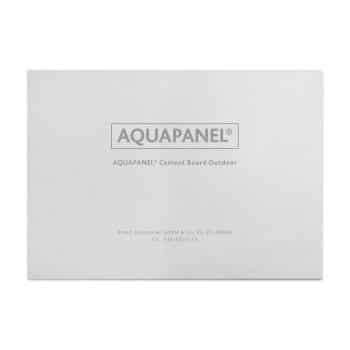
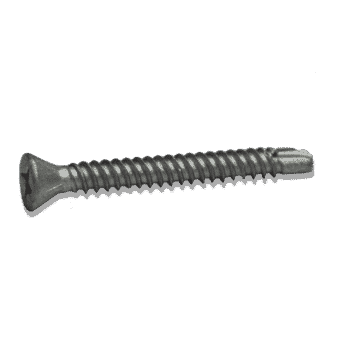
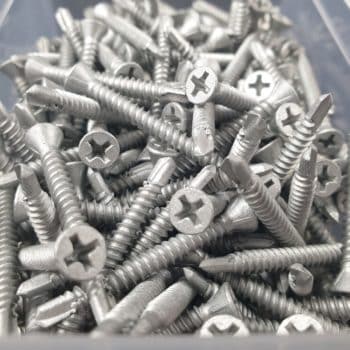
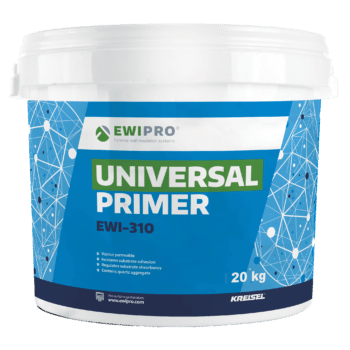

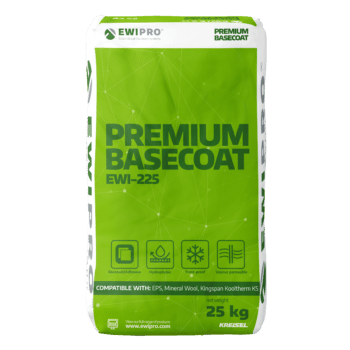
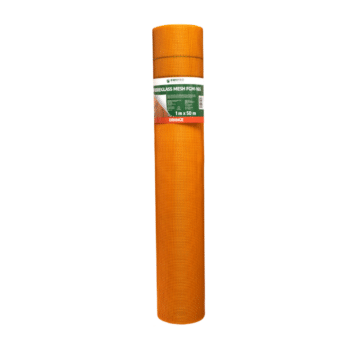
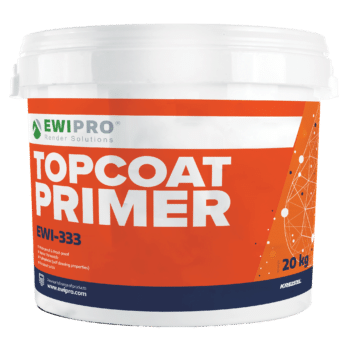

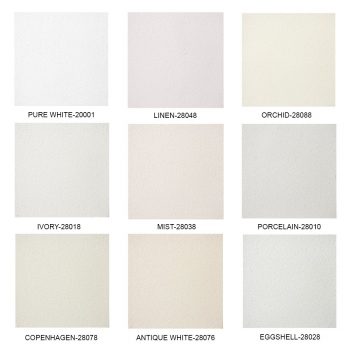

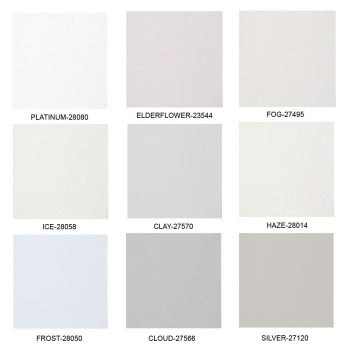

13 thoughts on “Applying Render to Cement Board”
I am trying to render a horizontal overhang on a property. My question is, can I go straight over the top of the Kingspan with an osb board, then apply the plaster render or should I consider using anything else?
I am wondering whether you need a vapour layer when applying this to cement board?
I am currently considering which insulation system to go with. I have been doing some research, and although the above matches the Sto system, I am unsure whether or not I need an air cavity behind the cement carrier board. Also whether I need to install a breathable membrane in this air cavity. Please can you advise? I want to install an insulation system that is going to last and I definitely don’t want it to cause any damp issues in my home.
Kind regards
Peter
Can you apply render to the floor without putting in a bell cast bead without beaching the DPC
Hi Dave, we would definitely not recommend bridging the DPC. A bellcast bead just about the DPC is the best bet.
My plasterer has applied a base coat after applying pva to the board which adhered okay he then applied a second coat pva when dry tried to put top coat . Which keeps peeling off has tried 3 times but will not adhere, can you give any advise please the weather is very hot has this anything to do with it .
Hi Andy, the boards aren’t absorbant so the PVA is the wrong type of primer in this case. Try using our EWI-310 universal primer for the carrier boards, or to build out multiple passes of basecoat (although not needed if using the EWI-225), or the EWI-333 Top coat primer between the basecoat and the render.
Can you advise what’s the approx finish thickness, excluding the render board? Thanks
Hi Jim, the total thickness of the basecoat and silicone render should be approximately 8mm as the basecoat layer is around 4-7mm depending on the selected basecoat. What render were you looking to use? The thickness will vary depending on that. Thanks
Probably your 1.5mm or 2mm textured render silicone finish, to match in to existing
Hi can sand and cement render go ontop the board ? As I need to do pebble dash render
Afternoon guys can I use your product as a complete novice to thin coat render on cp boards already fixed it situ?if so how to and what product is suitable?
Hi Martin, we’d probably recommend an experienced installer as they’ll be familiar with our products and ensure proper procedure. You can drop us an email on marketing@ewistore.co.uk and we can point you in the right direction.